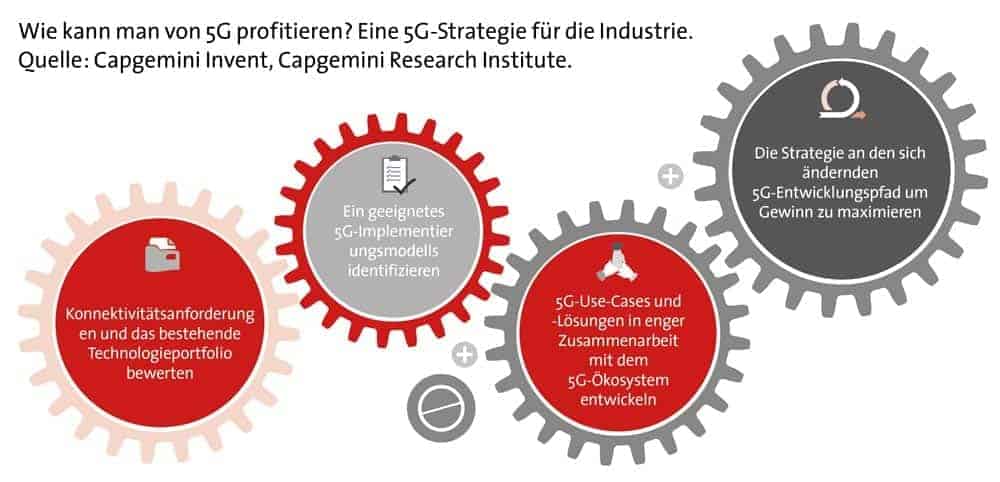

75 percent of executives from industrial companies believe that 5G will be the key factor for their digital transformation in the next five years. They thus attach the second greatest importance to this technology after cloud computing (84 percent), placing it ahead of innovation drivers such as automation and artificial intelligence/machine learning.
In general, companies believe that the features of 5G will help address connectivity challenges and support future use cases.
As a result, confidence in the potential of 5G is so high that almost two-thirds of the industrial companies surveyed worldwide (65 percent) plan to deploy the technology within the first two years of its availability.
According to the report, 75 percent of companies in the United Kingdom and Italy, 69 percent in Spain, and 68 percent in the United States and Norway are aiming for implementation within one to two years.
Own 5G licenses
33 percent of the companies surveyed intend to apply for their own licenses for industrial use. Globally, large companies with sales of more than ten billion U.S. dollars have the greatest interest in their own licenses (47 percent).
This is driven by the desire for greater autonomy and security, combined with concerns that telecoms companies are too slow in rolling out public 5G networks. Gunther May, Head of Technology and Innovation, Automation and Electrification Business Unit at Bosch Rexroth AG, said:
"As a manufacturer, we are closely monitoring the 5G landscape and believe there are several advantages to owning our own license. This would allow us to maintain full control over our 5G strategy by giving us the freedom to operate the network either on our own or with a telecom provider."
Safety and operational benefits
More than half of the companies justify their investments in 5G by saying that it will make their operations more secure (54 percent) and could result in more efficient operations and cost savings (52 percent globally).
This is accompanied by the expectation that 5G will help enable or enhance use cases such as real-time edge analytics, video surveillance, remote control of distributed manufacturing, AI-enabled or remotely controlled motion, remote operations via augmented reality/virtual reality, etc.






